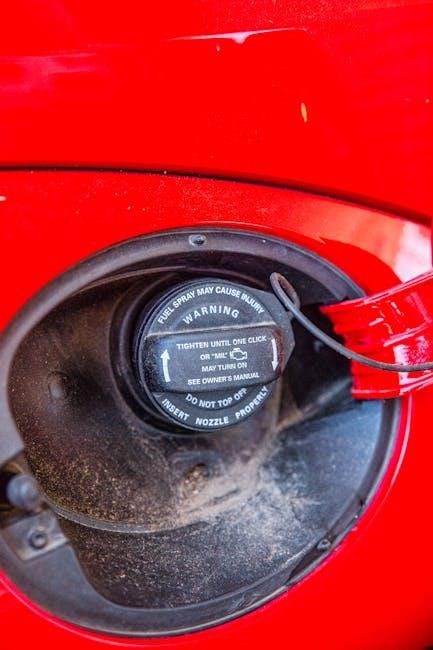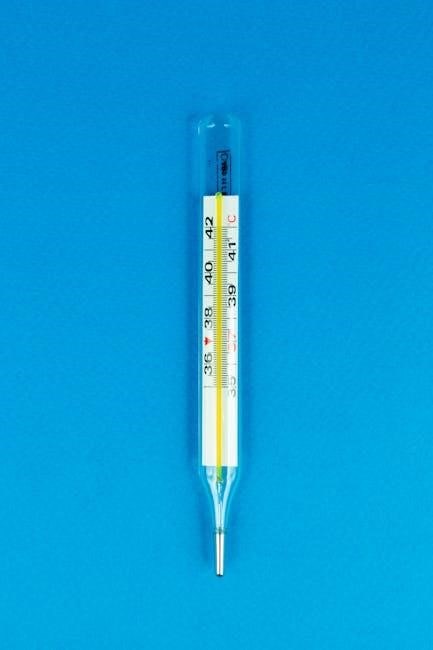
Celsius WG is a selective herbicide designed for warm-season turf, offering effective control of broadleaf weeds and grasses with flexible application rates and single-use convenience.
What is Celsius WG Herbicide?
Celsius WG is a selective, post-emergence herbicide designed for warm-season turf grasses like St. Augustine, Bermuda, Zoysia, and Centipede. It contains three active ingredients—Thiencarbazone-methyl, Iodosulfuron, and Dicamba—offering dual modes of action to control broadleaf weeds and grasses effectively. The WG formulation (water-dispersible granule) ensures easy mixing and application. It provides both post-emergent control and residual activity, preventing new weed growth. Ideal for residential lawns, golf courses, and sports fields, Celsius WG is flexible, with low, mid, and high application rates to address varying weed pressures. It is not approved for use on Bahia grass or cool-season turf.
Importance of Using Celsius WG for Weed Control
Celsius WG is crucial for effective weed control in warm-season turf due to its broad-spectrum activity and multiple modes of action. It targets both annual and perennial broadleaf weeds and grasses, ensuring a cleaner, healthier lawn. Unlike single-mode herbicides, Celsius WG combines three active ingredients to reduce the risk of weed resistance. Its flexibility in application rates allows customization based on weed severity, making it ideal for homeowners and professionals. Additionally, it has no heat restrictions, making it suitable for use in hot climates like Texas and Florida. Regular use prevents weed competition, promoting lush, vigorous turf growth and maintaining aesthetic appeal.

Active Ingredients and Modes of Action
Celsius WG contains thiencarbazone-methyl, iodosulfuron, and dicamba, offering dual modes of action. These ingredients inhibit amino acid synthesis and mimic plant growth hormones, effectively controlling broadleaf weeds and grasses.
Thiencarbazone-methyl and Iodosulfuron: Group 2 Herbicides
Thiencarbazone-methyl and iodosulfuron are Group 2 herbicides that inhibit acetolactate synthase (ALS), an enzyme essential for amino acid production. These systemic ingredients disrupt weed growth by preventing branched-chain amino acids, leading to plant death. Both target broadleaf weeds and work synergistically with dicamba for broad-spectrum control. Their mode of action ensures efficacy against resistant species, making them key components in Celsius WG’s formulation for warm-season turf. Applied at label rates, they provide reliable results without harming grass, offering a balanced approach to weed management. This dual mechanism enhances the herbicide’s effectiveness, ensuring targeted and efficient weed control. Proper application maximizes their benefits.
Dicamba: A Group 4 Herbicide
Dicamba, a Group 4 herbicide, acts as a synthetic auxin, mimicking natural plant hormones to disrupt cell growth. It causes twisting and curling in weeds, leading to systemic death. Dicamba is effective against broadleaf weeds and enhances the activity of other ingredients in Celsius WG. Applied correctly, it promotes healthy turf without harming grass. Proper usage and timing are crucial to avoid off-target damage; Dicamba’s inclusion in Celsius WG provides a complementary mode of action, improving overall weed control efficacy and spectrum. This makes it a valuable component for managing tough weed populations in warm-season turf. Always follow label instructions for optimal results and safety.
How the Active Ingredients Work Together
The active ingredients in Celsius WG—Thiencarbazone-methyl, Iodosulfuron, and Dicamba—work synergistically to provide broad-spectrum weed control. Thiencarbazone-methyl and Iodosulfuron, as Group 2 herbicides, inhibit amino acid synthesis, disrupting essential plant processes. Dicamba, a Group 4 herbicide, acts as a synthetic auxin, causing abnormal cell growth. Together, these modes of action target weeds through systemic activity, ensuring effective control of both broadleaf and grassy weeds. This combination reduces the risk of resistance and enhances efficacy, making Celsius WG a comprehensive solution for managing weeds in warm-season turf. The dual modes of action ensure thorough weed control while maintaining turf health. Proper application maximizes these benefits.

Application Instructions for Celsius WG
Celsius WG is applied via broadcast or spot treatments, with single-use packs offering convenience. Always follow label instructions for proper mixing and application rates to ensure effectiveness and safety.
Preparation Steps Before Application
Before applying Celsius WG, ensure the turf is dry to prevent wash-off. Wear long sleeves, pants, closed-toe shoes, and chemical-resistant gloves. Calibrate your sprayer to ensure accurate application rates. Measure the product carefully using the provided cup or a scale to avoid over-application. For single-use packs, simply add the contents to water in your sprayer. Mix thoroughly by agitating the solution. Avoid applying during strong winds or extreme temperatures. Double-check the label for specific instructions and environmental conditions. Proper preparation ensures effective weed control while maintaining turf health and safety. Always follow safety guidelines and product recommendations for optimal results.
Mixing Celsius WG for Broadcast Application
For broadcast application, mix 1.6-3.2 grams of Celsius WG per gallon of water per 1,000 sq. ft. Add water to the sprayer first, then the granules, agitating thoroughly. For low-rate coverage (4,000 sq. ft.), use 4 gallons of water. For high-rate coverage (2,000 sq. ft.), use 2 gallons. Ensure the solution is well-mixed to prevent uneven distribution. Use the entire mixture within one week of preparation to maintain efficacy. Accurate mixing is crucial for effective weed control without harming the turf. Follow label instructions precisely for optimal results and to avoid over-application.
Mixing Celsius WG for Spot Treatment
For spot treatments, mix 0.057-0.113 oz (1.6-3.2 g) of Celsius WG per gallon of water. This solution is applied directly to weeds until they are wet. One gallon covers a small, targeted area, making it ideal for isolated weed growth. Add water to the sprayer first, then introduce the granules, agitating well to ensure even distribution. Single-use packs simplify spot treatment by eliminating measuring errors; Use the mixture promptly, as it remains effective for up to one week. Spot treatments are perfect for addressing specific weed issues without treating the entire lawn, ensuring efficient and targeted control.
Using Single-Use Packs for Convenience
Single-use packs of Celsius WG offer a convenient solution for precise application without measuring. Each pack covers up to 4,000 sq ft at the low rate or 2,000 sq ft at the high rate. Simply add the contents to water in a backpack sprayer, agitate to dissolve, and apply. This eliminates measuring errors and simplifies mixing. The packs are ideal for DIY users with small lawns or targeted needs, ensuring accurate application rates. They also reduce storage concerns, as unused product isn’t left over, making them a practical choice for occasional use. This method ensures efficiency and ease, perfect for spot or small-area treatments.

Safety Precautions and Personal Protective Equipment
Always wear long sleeves, pants, closed-toe shoes, socks, and chemical-resistant gloves when applying Celsius WG. Follow label instructions for safe application and handling.
Required PPE for Applying Celsius WG
When applying Celsius WG Herbicide, wear long-sleeved shirts, long pants, closed-toe shoes, socks, and chemical-resistant gloves to minimize skin exposure. Protective eyewear is also recommended. Always follow label instructions for safe handling and application to avoid potential health risks. Proper PPE ensures effective protection against chemical exposure, allowing for safe and efficient weed control. Adhering to these guidelines helps prevent accidental contact and ensures the herbicide is used responsibly. Remember, safety is a priority when working with agricultural chemicals like Celsius WG. By wearing the correct gear, you can apply the product confidently and protect yourself from potential hazards.
First Aid Instructions in Case of Exposure
In case of exposure to Celsius WG Herbicide, immediately rinse affected areas with water. If contact occurs with eyes, flush them with clean water for at least 15 minutes. Remove contaminated clothing and wash skin thoroughly with soap and water. If ingestion happens, drink water and seek medical attention promptly. For inhalation, move to fresh air and consult a healthcare professional if discomfort persists. These steps help mitigate potential health risks and ensure timely treatment. Always refer to the product label for detailed first aid guidelines and handle the herbicide with care to prevent accidental exposure during application.

Storage and Disposal Guidelines
Store Celsius WG in a cool, dry place, away from direct sunlight, to maintain effectiveness up to three years. Dispose according to local regulations, avoiding water contamination.
Proper Storage Conditions for Celsius WG
Celsius WG should be stored in a cool, dry place, away from direct sunlight and moisture. The ideal storage temperature is between 40°F and 90°F. Keep the product away from children, pets, and other chemicals. Ensure the container is tightly sealed to maintain potency. When stored properly, Celsius WG remains effective for up to three years. Avoid exposing the herbicide to extreme temperatures or humidity, as this may degrade its performance. Always follow the label instructions for storage to ensure safety and efficacy. Proper storage helps maintain the product’s integrity for optimal weed control results.
Safe Disposal Methods for Unused Product
Unused Celsius WG should be disposed of according to local, state, and federal regulations. Do not pour the product down drains or storm sewers, as it may contaminate waterways. If the product is still usable, consider donating it to a neighboring farm or garden. For empty containers, rinse thoroughly and recycle if permitted. If the product is no longer usable, contact a hazardous waste disposal facility for proper handling. Always refer to the product label for specific disposal instructions. Proper disposal protects the environment and ensures compliance with safety standards.
Calculating the Correct Use Rates
Celsius WG use rates vary based on weed type and treatment area. Low, mid, and high rates are available, with single-use packs simplifying application. Yearly maximums apply.
Understanding Low, Mid, and High Application Rates
Celsius WG offers three application rates: low, mid, and high, tailored to weed severity and treatment area. The low rate (1.6 g/1,000 sq ft) is for minor infestations, while the high rate (3.2 g/1,000 sq ft) targets severe weed pressure. Single-use packs simplify dosage accuracy, covering 2,000-4,000 sq ft. The yearly maximum for blanket applications is 4.83 g/1,000 sq ft, ensuring safe, effective use without over-application. Proper rate selection balances weed control and turf safety, preventing resistance and environmental impact. Always follow label guidelines to avoid exceeding limits, especially for blanket treatments, while spot spraying remains unrestricted within the annual cap.
Yearly Maximum Allowable Use Rate for Blanket Applications
The yearly maximum allowable use rate for Celsius WG when applied as a blanket treatment is 4.83 grams per 1,000 square feet. This equates to 210 grams per acre annually. Exceeding this limit can harm turf or the environment. If using the high rate (3.2 g/1,000 sq ft) for a blanket application, only the low rate (1.6 g/1,000 sq ft) remains available for a second treatment within the same year. This restriction ensures safe and effective weed control while preventing over-application and resistance development. Always adhere to these guidelines for optimal results and turf health.

Application Methods and Calibration
Broadcast spraying and spot treatments are effective methods for applying Celsius WG. Proper sprayer calibration ensures accurate application, maximizing effectiveness while maintaining safety and preventing overuse.
Best Practices for Broadcast Spraying
For effective broadcast spraying with Celsius WG, ensure proper preparation and calibration. Start by adding water to the sprayer, then introduce the granules, agitating thoroughly to dissolve evenly. Use a backpack sprayer for accuracy, applying at low to mid rates for broader coverage or high rates for heavy weed infestations. Calibrate your sprayer to maintain the correct flow rate, ensuring uniform coverage across the target area. Apply during early morning or late afternoon to minimize drift and optimize absorption. Avoid spraying in windy or extreme heat conditions. Follow label instructions precisely to prevent over-application and ensure environmental safety. Always wear required PPE, including gloves and protective eyewear.
Spot Spraying Techniques for Targeted Weed Control
Spot spraying with Celsius WG is ideal for targeting specific weeds while minimizing chemical use. Mix 0.057-0.113 oz (1.6-3.2 g) of Celsius WG per gallon of water for spot treatments, ensuring thorough coverage of the target area. Use a backpack sprayer or hand sprayer for precision, applying the solution until weeds are wet but avoiding runoff. For small areas, single-use packs are convenient, covering up to 2,000 sq ft at the high rate. Apply in calm conditions to prevent drift and ensure the solution stays on the target weeds. This method is efficient for isolated infestations, reducing waste and environmental impact while maintaining effectiveness.
Calibrating Your Sprayer for Accurate Application
Calibrating your sprayer ensures precise application of Celsius WG, preventing overuse and environmental harm. For backpack sprayers, measure the area covered in one minute at a walking pace, typically 1,000 sq ft. Determine the required water volume by adding 2 gallons for high rates or 4 gallons for low rates. Add the appropriate Celsius WG packet or measured granules, agitate thoroughly, and clear the spray line. Test the flow rate and adjust nozzle settings if needed. Regular calibration ensures accurate delivery of the herbicide, maximizing efficacy while adhering to label guidelines and minimizing waste. Proper setup is crucial for optimal results and safety.

Environmental Considerations
Celsius WG is safe for warm-season turf but not for Bahia grass; It’s effective in hot climates like Texas and Florida, avoiding heat restrictions for application.
Impact on Warm-Season Turf Grasses
Celsius WG is specifically designed for use on warm-season turf grasses such as St. Augustine, Bermuda, Zoysia, and Centipede. It is not approved for use on Bahia grass. While it effectively controls weeds, it may cause temporary stunting of the turf. This stunting, which is not harmful, typically resolves within a week as the grass resumes normal growth. Celsius WG is ideal for hot climates like Texas and Florida, as it has no heat-related application restrictions. Proper application ensures the health and safety of the turf while maintaining effective weed control. Always follow label instructions to avoid unnecessary stress to the grass.
Restrictions for Use on Bahia Grass
Celsius WG Herbicide is not labeled for use on Bahia grass and should be avoided on this turf type. Applying it to Bahia grass can cause significant damage, including discoloration, stunting, or even death. The product is specifically formulated for warm-season grasses like St. Augustine, Bermuda, Zoysia, and Centipede. Using it on Bahia grass violates label instructions and can lead to undesirable results. Always consult the product label or contact a turf professional to ensure safe and effective herbicide application. Using Celsius WG on unauthorized grass types may also pose legal and environmental risks, emphasizing the importance of adhering to label guidelines strictly.

Common Weeds Controlled by Celsius WG
Celsius WG effectively controls a wide range of weeds, including dollarweed, clover, and Florida pusley. It targets both broadleaf weeds and grassy weeds in warm-season turf.
Dollarweed, Clover, and Florida Pusley
Dollarweed, clover, and Florida pusley are common weeds effectively controlled by Celsius WG. Dollarweed, with its round leaves, often invades lawns with poor drainage. Clover, a nitrogen-fixing weed, can outcompete turf in nutrient-poor soil. Florida pusley, a warm-season annual, spreads quickly in thin turf. Celsius WG’s multiple modes of action inhibit amino acid synthesis and disrupt plant growth, ensuring these weeds are targeted systemically. The herbicide’s residual activity also prevents new germination of these species. Proper application ensures effective control while maintaining turf health, making it a reliable solution for maintaining a weed-free lawn in warm-season grasses.
Other Broadleaf Weeds and Grassy Weeds
Beyond dollarweed and clover, Celsius WG effectively controls a wide range of other broadleaf weeds, including chickweed, henbit, and spurge. Additionally, it targets grassy weeds like crabgrass and goosegrass. The herbicide’s systemic action ensures that both annual and perennial weeds are eliminated, preventing regrowth. The combination of active ingredients in Celsius WG inhibits essential biochemical pathways in these weeds, leading to their rapid decline. This broad-spectrum control makes Celsius WG a versatile and efficient choice for maintaining a healthy, weed-free turf, especially in warm-season grasses like St. Augustine, Bermudagrass, and Zoysia.

Tips for Avoiding Over-Application and Resistance
Use recommended rates to prevent over-application. Rotate herbicides with different modes of action annually to minimize resistance. Alternate Celsius WG with other herbicides to maintain efficacy long-term.
Understanding the Risks of Over-Application
Over-applying Celsius WG can harm turf, delay recovery, and reduce efficacy. Exceeding labeled rates may stress warm-season grasses like St. Augustine or Zoysia, causing stunted growth without additional weed control benefits. This misuse can also accelerate weed resistance, making future treatments less effective. Adhering to the recommended low, mid, or high rates ensures targeted weed control while maintaining turf health. Always follow the product label and consider soil type, weed density, and environmental conditions to avoid over-application and protect your lawn’s integrity. Proper usage is key to achieving optimal results without compromising long-term turf sustainability and weed management effectiveness.
Strategies to Prevent Weed Resistance
To minimize weed resistance, use Celsius WG as part of an integrated pest management strategy. Rotate with herbicides from different modes of action and apply at labeled rates. Avoid consecutive applications of the same product. Incorporate cultural practices like proper mowing, watering, and fertilization to strengthen turf and reduce weed pressure. Monitor for new weeds and address them early. For resistant species, consider tank-mixing with compatible herbicides. Adhere to re-application intervals and yearly maximum use rates to prevent overuse. Spot treatments are preferable for isolated infestations, reducing overall herbicide exposure. Diversifying control methods enhances long-term weed management effectiveness and sustainability.

Troubleshooting and Re-Application
If weeds persist, re-apply Celsius WG 2-4 weeks after the initial treatment, ensuring adherence to label guidelines to avoid over-application and maintain product efficacy and safety.
When and How to Re-Apply Celsius WG
Re-application of Celsius WG should occur 2-4 weeks after the initial treatment if weeds are still present. Ensure the second application adheres to the recommended use rates to prevent over-application. For blanket applications, the yearly maximum allowable rate must be considered. If using the high rate initially, the second application should be at the low rate to stay within limits. Spot treatments do not have these restrictions, allowing for more flexibility. Always follow the product label and maintain proper intervals to achieve optimal weed control without damaging the turf. Proper timing and rate adjustment are key to effective and safe re-application.
Addressing Incomplete Weed Control
If weeds persist after the initial application, re-application of Celsius WG may be necessary. Ensure the second treatment is applied 2-4 weeks after the first to allow the herbicide to take full effect. For blanket applications, adhere to the yearly maximum use rate to avoid over-application. If the high rate was used initially, the second application should be at the low rate. Spot treatments do not have these restrictions. Always follow the product label for proper timing and rates. Properly timed and dosed re-applications will help achieve effective weed control while maintaining turf health and preventing resistance. Follow label guidelines for best results.
For optimal results with Celsius WG, follow label instructions, use appropriate rates, and wear recommended PPE. Proper calibration ensures effective weed control while maintaining turf health and safety.
For effective use of Celsius WG Herbicide, follow label instructions precisely, ensuring correct mixing rates and application methods. Use single-use packs for convenience and accuracy, especially for smaller areas. Store the product in a cool, dry place and dispose of unused portions safely. Apply within the recommended temperature range and avoid spraying on sensitive turf types like Bahia grass. Maintain the yearly maximum allowable use rate to prevent over-application and resistance. Calibrate your sprayer regularly and use appropriate PPE for safety. For optimal results, apply when weeds are actively growing and consider spot treatments for targeted control. Proper use ensures healthy turf and effective weed management.
Final Recommendations for Optimal Results
For optimal results with Celsius WG Herbicide, always follow label instructions precisely, ensuring accurate mixing and application rates. Use single-use packs for convenience and consistency, especially for smaller lawns. Apply during active weed growth and in cooler parts of the day to minimize turf stress. Monitor treated areas for effectiveness and reapply only as needed, adhering to the yearly maximum use rate. Avoid over-application to prevent resistance and maintain turf health. Wear recommended PPE and follow safety guidelines to ensure safe use. By adhering to these practices, you can achieve effective weed control while protecting your lawn and the environment.
Additional Resources and References
Visit the official Celsius WG website or consult the product label for detailed instructions. Explore trusted agricultural websites and forums for user experiences and expert advice.
Where to Find More Information on Celsius WG
For comprehensive details on Celsius WG Herbicide, visit the official product website or refer to the label instructions. Additional resources include agricultural extension offices, pest control websites, and user forums. The blog post by Allyn Hane on Yard Mastery provides in-depth guides and application tips. YouTube tutorials and manufacturer FAQs also offer practical insights. Always consult trusted sources to ensure accurate and safe use of the product.
Recommended Reading for Weed Control in Turf
For effective weed management, explore articles on Yard Mastery, which offers detailed guides on using Celsius WG. Additionally, resources from agricultural extension services and pest management websites provide insights into integrated pest management strategies. Blogs and forums dedicated to turf care often share practical tips and user experiences. Manufacturer guidelines and instructional videos are also essential for optimizing herbicide application. These sources collectively ensure a well-rounded approach to maintaining healthy, weed-free turf.